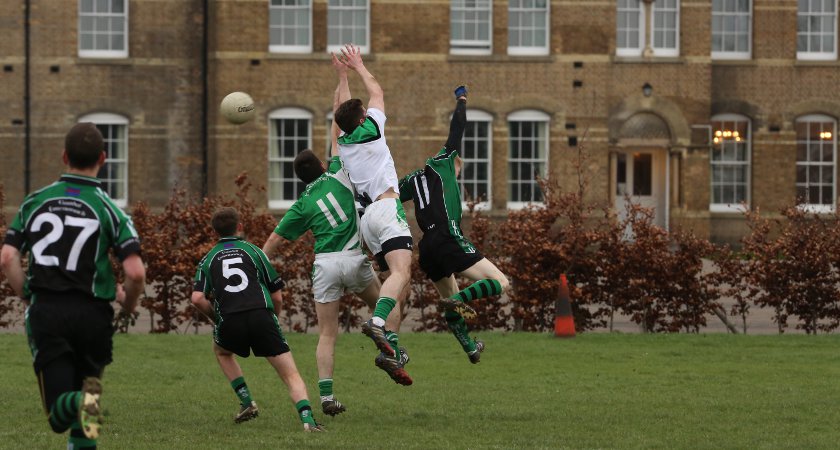WHEN Cork won the 2010 All-Ireland football title, their success, especially in the final against Down, was primarily based on a dominant midfield. The All-Ireland winners often dictate what is fashionable, but Cork were so orthodox at midfield that nobody dared to follow their lead.
Cork won 70 per cent of the kick-outs in that final and there was as much significance attached to Down’s ineptitude than Cork’s brilliance in that battle. Not having a more varied kickout strategy cost Down because they lost 15 of their own kickouts.more pronounced in 2011, especially on kickouts.
That first crucial turning point was the 2010 All-Ireland quarter-final when Dublin allowed Tyrone to win 22 out of 27 short kickouts, before defending deeper in an attempt to turn the ball over. Then other coaches and managers started copying Dublin. Teams did go long but short kickouts became all the trend in Gaelic football in the intervening years.
David Moran’s performance for Kerry in the 2014 All-Ireland semi-final replay against Mayo — when winning nine kickouts — was a standout example of quality high fielding. Yet that was still an isolated example because high-fielding still exists in a type of twilight zone in the modern game. Primarily because the high fielder has never really been protected by rule changes.
Invariably surrounded by gang-tacklers once they hit the ground, there is often no advantage to high fielding. Some managers and coaches have actively discouraged their players catching high balls in the middle of the field.
 Irish Guards in action against Harlseden Harps
Irish Guards in action against Harlseden HarpsWhen the Football Review Committee (FRC) conducted their research on the game in 2012, analysis of 61 match DVDs showed that 50 per cent of all kick-outs in inter-county games resulted in a breaking ball, compared with 15 per cent which were caught cleanly overhead. At both club and inter-county games, there was an average of just six overhead catches per game.
In the online survey conducted by the FRC, respondents ranked catching skills as number one in order of preference of all the skills they most liked about Gaelic football. A majority were also in favour of the introduction of the mark — allowing a free kick or the option of playing on to a player who catches the ball from a kick-out that has travelled at least 45 metres.
Along with encouraging greater emphasis on the development of the skill, it was also envisaged that the mark would help reduce gang-tackling after a catch has been made. The mark had already been on the GAA agenda for two years before the FRC began their research. In 2010 it was trialled in the National League. As part of the FRC’s proposals three years later, the mark came extremely close to securing the necessary two-thirds majority to being passed, getting 65 per cent.
At GAA Congress two weeks ago though, the mark finally secured the green light. A few days later, Jarlath Burns, chairman of the Standing Committee on Playing Rules, who piloted the reform, said that the mark is unlikely to be introduced into football before next year.
When the matter goes before Central Council next week, they will more than likely opt for January 2017 as opposed to introducing the mark this May. That will give players and referees sufficient time to train and prepare for its introduction.
The rule change has been successfully trialled in the Leinster minor league but there has already been mixed feedback, especially on how much impact it can have.
![Cork's Rena Buckley and Briege Corkery with Louise Ward of Galway [Picture: Inpho]](https://media.irishpost.co.uk/uploads/2015/09/Rena-Buckley-Briege-Corkery-Cork-Ladies-GAA.jpg) Cork's Rena Buckley and Briege Corkery in an aerial battle with Louise Ward of Galway [Picture: Inpho]
Cork's Rena Buckley and Briege Corkery in an aerial battle with Louise Ward of Galway [Picture: Inpho]Meanwhile, Armagh manager Kieran McGeeney favours the rule change but believes it should apply in every sector of the field, as in the AFL and International Rules.
McGeeney also accepts the impact of stopping the game for a clean catch has yet to be determined and could lead to even more tightly-packed defences. “If you stop and take the free, even though you’ve five seconds to take it,” said McGeeney, “it gives players more time to filter back.”
Roscommon selector Liam McHale disagrees. “You’d effectively have a free in the middle of the field and if you can move it on quick, you’re in a really good situation to attack and put the opposition full-back line under pressure.”
Kerry All-Star goalkeeper Brendan Kealy believes the new rule will encourage teams to find
players in space catching kick-outs rather than increase high fielding. His manager Eamonn Fitzmaurice pointed out the rule doesn’t necessarily promote overhead catches, as a ball need only be cleanly caught from a kick-out on, or past, the 45-metre line.
That is a view Tyrone manager Mickey Harte has long held. Harte was largely responsible for redefining midfield play in the last decade. His players nullified the influence of the high catch, while his more mobile and adaptable midfielders gradually became the template for the position.
Harte has always propagated the importance of legal quality tackling and has never believed that the mark will restore high fielding. “There is no evidence to support that belief as the ball doesn’t even have to be caught above the head to complete a successful mark,” said Harte in 2013. “Additionally, if teams have players who are already aerially advantaged by their physique then the opposition will be even more determined to make sure they don’t catch clean ball.”
This debate on the mark is only beginning. Yet at least it has the opportunity now to begin properly.

